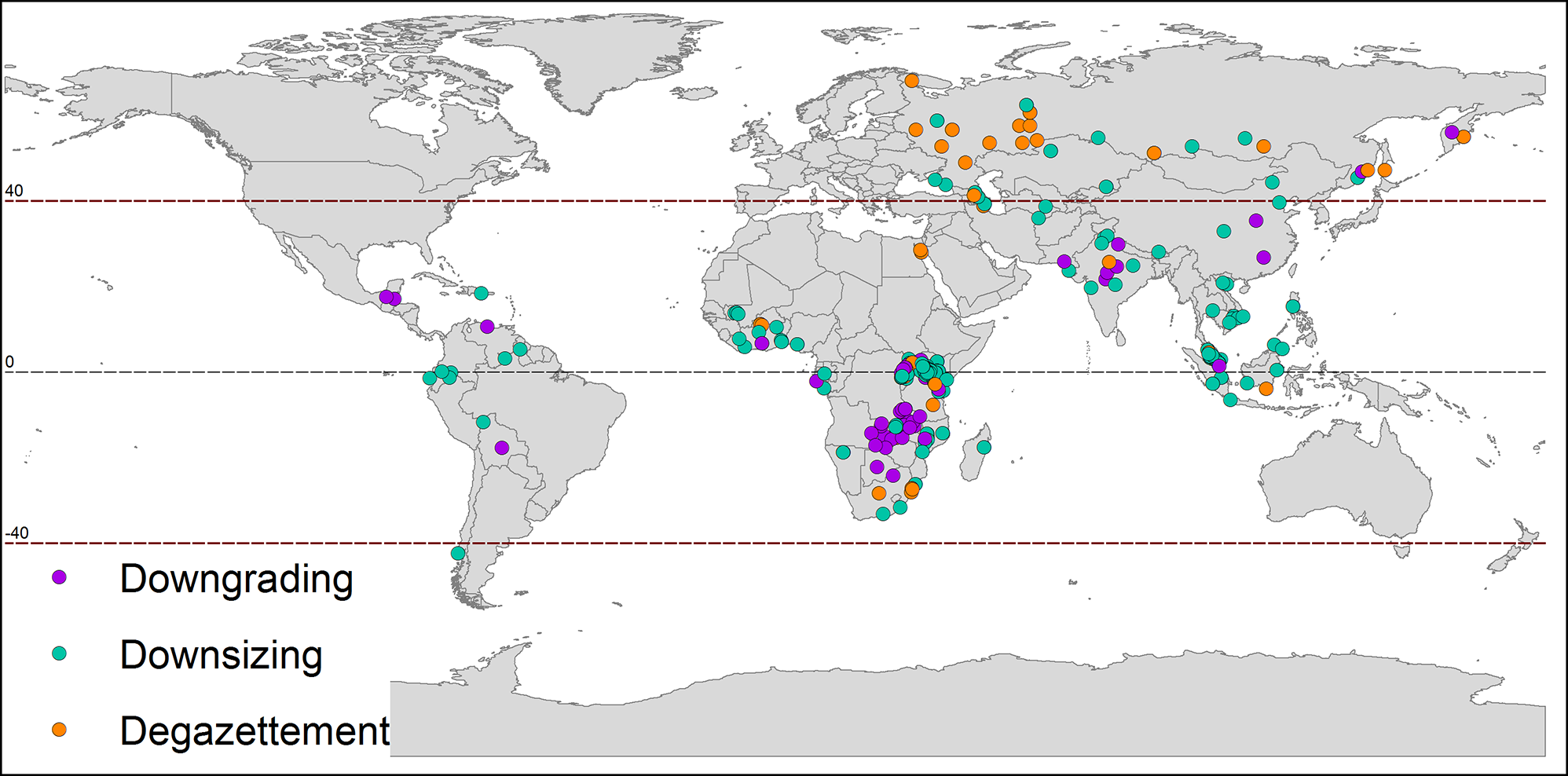Research
MAJOR RESEARCH AREAS
Conservation science
Ecological economics
Sustainability
Ecosystem services
RESEARCH METHODOLOGIES
The lab is eminently applied and quantitative. A wide range of mathematical, computational and statistical modeling approaches are employed.
CURRENT PROJECTS
Map of recent Protected Area Downgrading, Downsizing, and Degazettement (PADDD) events, see below for more information
Reconciliation of biodiversity conservation with economic and agricultural development:
- Assess the effects of tropical deforestation on household income and health in Indonesia
- Optimize economic and environmental costs of connecting topical cities with roadways
- Accounting for environmental and market feedbacks when prioritising land for conservation: Using a case study in the Atlantic forest of Brazil to perform a spatially explicit prioritization to model the ecological feedbacks from changes in forest configuration and market feedbacks from information rents, and explore the consequences for conservation outcomes of ignoring these feedbacks
Connecting socioeconomics and conservation biology:
- Analysis of factors influencing protected area downgrading, downsizing and degazettements (PADDD) in the tropics and sub-tropics : spatial occurrence of PADDD events was analysed using Generalized Linear Mixed Models and Zero Inflated Models to understand what economic and demographic factors influence PADDD. Key findings: (1) The probability of a PADDD event increases with PA size, (2) PA size acts synergistically with local population density to further increase the probability of PADDD
- Exploring social equity in Payments for Ecosystem Services (PES): (1) What PES scheme characteristics are associated with equity factors?, (2) How auctions to allocate PES contracts impact social equity, (3) What are the impacts on community social dynamics from PES?, (4) Does spatial targeting of PES increase efficiency but reduce equity?
- Analysis of land use distribution in Myanmar in the context of its current political reforms and economic development: 1) Understanding the factors that explain current agricultural and forest distributions with generalized linear mixed effects models, 2) Projecting future spatial patterns of agricultural expansion, and 3) Identifying Key Biodiversity Areas with the highest risk of agricultural expansion.
